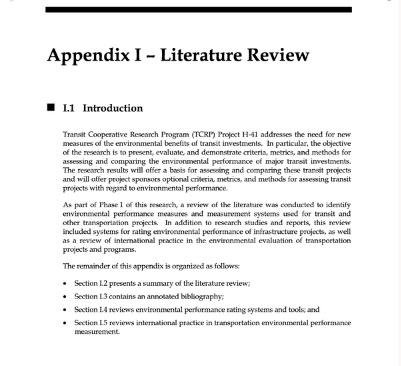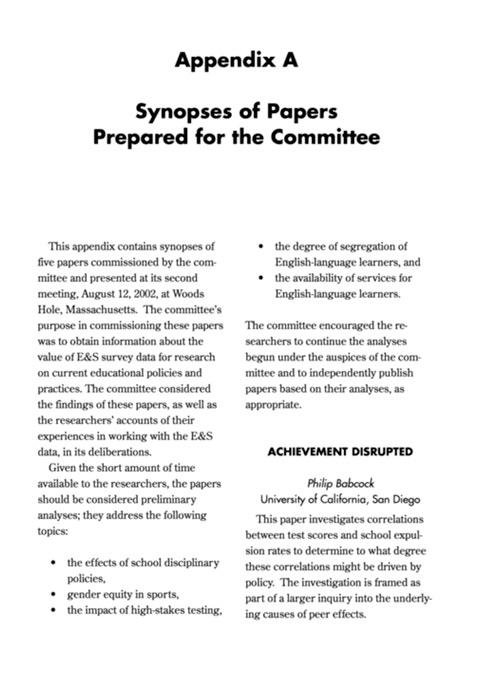research report appendix

In the intricate tapestry of a research report, the appendix serves as a vital yet often overlooked thread. This section, while secondary to the core narrative of findings and analysis, enriches the research by providing supplementary material that enhances understanding without overwhelming the main text. Imagine the appendix as a treasure chest, brimming with additional data, methodologies, charts, or raw statistics that support the conclusions drawn in the report. It allows researchers to present intricate details that would be cumbersome in the main body, ensuring clarity and focus.
In this article, we will explore the various facets of the research report appendix. We will delve into its purpose, discuss what constitutes appropriate content, and offer practical tips on how to effectively craft this essential section. Whether you are a seasoned researcher or a student embarking on your first major project, understanding the role of the appendix can significantly enhance the value of your work, providing a richer context and greater transparency in your research methodology. Join us as we unpack the essentials of creating a thorough and useful appendix that complements your research report, ensuring that no valuable data goes unnoticed.
Understanding the Purpose and Importance of a Research Report Appendix
The appendix of a research report serves as a supplementary resource that offers readers additional information without interrupting the flow of the main text. It functions as a repository for detailed data, extended methodologies, and supporting materials that enhance the comprehension of the research findings. By isolating this crucial information, researchers can maintain clarity in the primary narrative while still providing access to all relevant details for those who seek further insight. Notably, the appendix can include various elements such as:
- Raw data tables that are too extensive to fit within the report body.
- Questionnaires and surveys used in data collection.
- Addendum materials such as charts, graphs, and images.
Moreover, an appendix enriches the credibility of a research report. By allowing readers to scrutinize the underlying data, it validates the conclusions drawn and provides a clear trail for critical assessment. This transparency is vital, as it not only reinforces the integrity of the study but also encourages other researchers to build upon the work presented. In structuring your appendix effectively, consider organizing it into various sections, each with a clear label. Here’s a simple example of how to structure the content:
| Section | Content |
|---|---|
| Data Tables | Comprehensive statistics used in the analysis. |
| Methodologies | Detailed descriptions of research strategies. |
| Supplementary Materials | Additional resources that add depth to the findings. |

Essential Components to Include in Your Research Report Appendix
When crafting an effective research report appendix, it’s crucial to incorporate elements that enhance the comprehensibility and organization of your findings. Some essential components to consider include:
- Raw Data: Providing extensive raw data in a raw and unprocessed state allows for transparency and enables readers to draw their own conclusions.
- Methodology Details: Include detailed descriptions of the methodologies used in your research, ensuring that any experimental designs or procedures are clearly outlined.
- Statistical Analysis: Present any statistical methods employed and their results, including tables and charts that summarize relevant findings.
- Additional Literature: List any supplementary readings or research that were referenced but not included in the main body of the report.
- Sample Calculations: Show examples of calculations performed to help in understanding complex data interpretation.
Moreover, ensuring your appendix is well-structured and easy to navigate is vital for the reader’s experience. Utilizing tables can be an effective way to display information concisely. For instance:
| Component | Description |
|---|---|
| Figures | Include visual representations that support your research findings. |
| Interview Transcripts | Provide full transcripts when qualitative data were collected through interviews. |
| Consent Forms | Include copies of any consent forms to ensure ethical compliance in your research. |

Best Practices for Organizing and Formatting Your Appendix
When constructing an appendix for your research report, organization is key to ensuring readers can navigate the additional material effectively. Begin by clearly labeling each section with descriptive headings that reflect the content, such as “Survey Results” or “Methodology Details.” This makes it intuitive for your audience to locate specific data. Utilize a consistent format throughout, whether it’s charts, graphs, or raw data, to provide a cohesive look. In addition, consider incorporating the following elements to enhance clarity:
- Table of Contents specifically for the appendix, if it contains numerous sections.
- Legends or Footnotes informing the reader of any abbreviations or symbols used.
- Clear Formatting such as bullet points or tables to present complex information succinctly.
When deciding on content, select only the most relevant information that supplements your main findings. Ensure your data is easily digestible by employing visual aids such as graphs or tables that summarize key points. Below is an example of a simple table that showcases hypothetical survey data:
| Survey Question | Yes (%) | No (%) |
|---|---|---|
| Are you satisfied with the product? | 85 | 15 |
| Would you recommend it to others? | 90 | 10 |
| Do you plan on purchasing again? | 78 | 22 |

Maximizing the Impact of Your Appendix on Research Clarity and Credibility
Incorporating an appendix into your research report can significantly enhance both the clarity and credibility of your findings. An appendix serves as a supplementary section that houses detailed information, data sets, and methodologies that are too extensive to include in the main text. This not only keeps your main report focused and readable but allows readers to examine the evidence supporting your conclusions. When crafting your appendix, consider organizing your content in a way that is easily navigable:
- Group related materials together (e.g., tables, graphs, and raw data)
- Use clear headings and subheadings
- Provide concise descriptions of each item’s relevance
Additionally, using tables effectively can contribute to the overall professionalism of your appendix. Well-structured tables not only present data clearly but also make it easier for readers to grasp complex information at a glance. For instance, a simple table might showcase data comparisons or summarize findings. Here’s an example:
| Variable | Measurement | Result |
|---|---|---|
| Sample Size | 150 participants | Statistically significant |
| Control Group | 75 participants | No significant difference |
| Findings | Based on survey | Supports hypothesis |
Insights and Conclusions
As we conclude our exploration of the research report appendix, we come to appreciate its vital role within the realm of academic and professional discourse. Just as a well-structured symphony relies on its supporting instruments to create harmony, so too does a research report depend on its appendix to present essential data, detailed methodologies, and supplementary materials. This often-overlooked section of a report serves not merely as an addendum but as a cornerstone of transparency, enabling readers to delve deeper into the intricacies of the research process.
In a world where information is abundant and clarity is paramount, the appendix stands as a beacon of organization and thoroughness. By providing clear pathways to critical insights, it enhances the reader’s understanding and empowers them to engage with the findings more meaningfully. So, as you craft your next research endeavor, remember the power housed within the appendix—use it wisely, and let it elevate the quality of your work, ensuring that your findings resonate long after the final word is penned. Here’s to uncovering the often-underappreciated depths of research, one appendix at a time.




